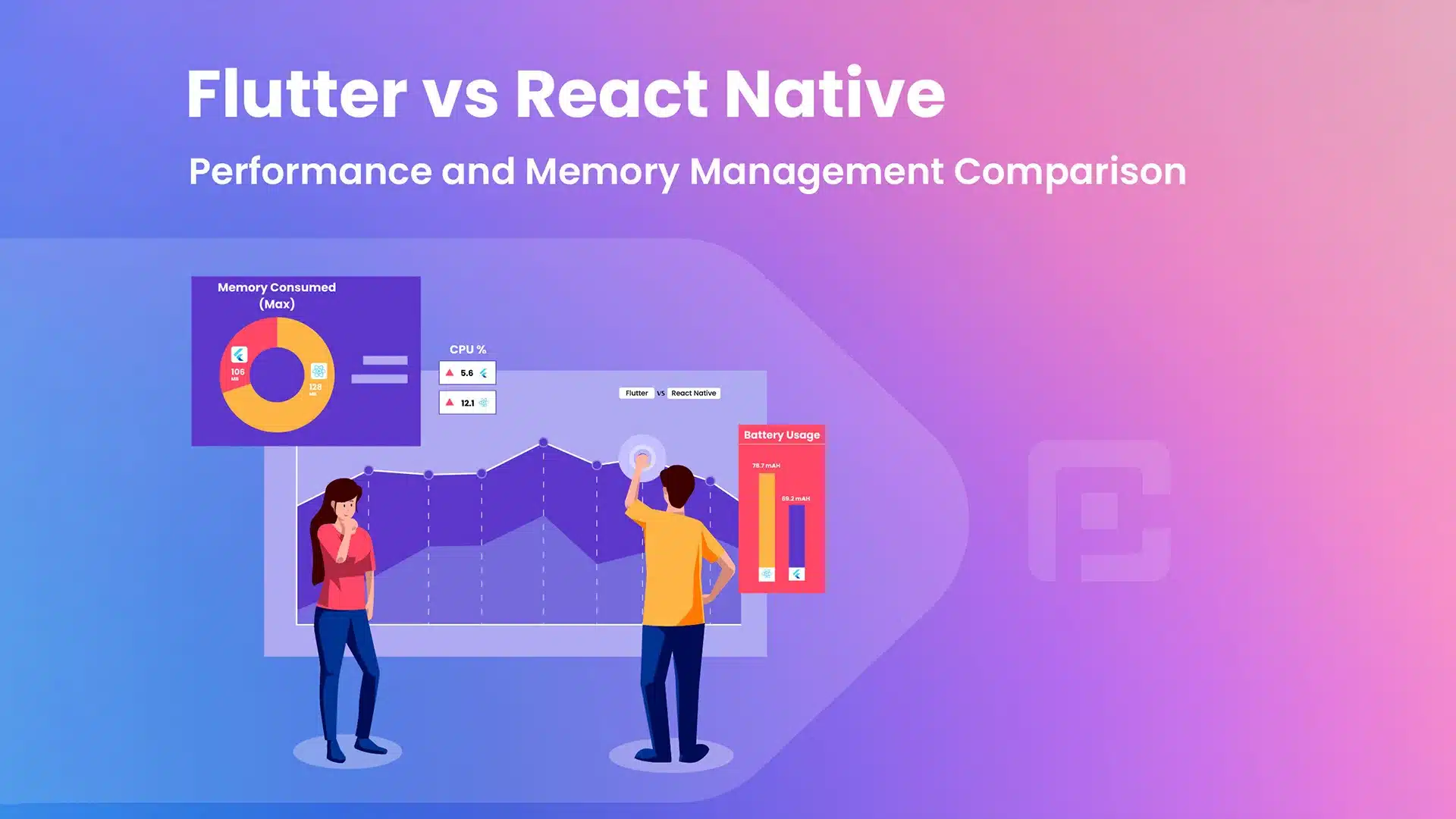Flutter vs React Native: Performance & Memory

27 June
When it comes to cross-platform app development, Flutter and React Native are two popular frameworks that offer unique advantages and capabilities. One crucial aspect to consider when choosing between the two is their performance and memory management. In this comprehensive comparison, we will delve into the performance characteristics and memory management approaches of Flutter and React Native. By understanding how these frameworks handle performance and memory, you can make an informed decision on which one is better suited for your app development needs. Let’s dive in and explore the performance and memory management aspects of Flutter and React Native.
Performance
Performance is a critical factor to consider when developing mobile applications. Users expect apps to be fast and responsive, and poor performance can lead to a negative user experience. Let’s take a closer look at how Flutter and React Native compare in terms of performance.
Flutter Performance
Flutter is known for its excellent performance. It uses a reactive programming model and a customizable widget system that allows developers to create highly optimized apps. Flutter also has a built-in GPU-accelerated renderer that helps to ensure smooth animations and transitions.
Flutter’s architecture allows it to perform better than React Native in some cases, especially when it comes to complex animations and transitions. Flutter’s widget system allows developers to create custom UI components, which can be optimized for performance. Flutter also has a hot reload feature that allows developers to see the changes they make in the code immediately, making it easier to iterate quickly and optimize the app’s performance.
React Native Performance
React Native’s performance has been a topic of discussion for some time. While React Native apps are generally fast, they can struggle with more complex animations and transitions. This is because React Native uses a JavaScript bridge to communicate between the app and the native platform, which can introduce some latency.
React Native’s architecture can make it more challenging to optimize performance compared to Flutter. However, React Native has made significant improvements in recent years, and there are several performance optimization techniques that developers can use to improve app performance.
Memory Management
Memory management is another critical factor to consider when developing mobile applications. Apps that use too much memory can cause crashes and negatively impact the user experience. Let’s take a closer look at how Flutter and React Native compare in terms of memory management.
Flutter Memory Management
Flutter uses a garbage collector to manage memory. The garbage collector automatically frees up memory that is no longer being used by the app. This can help to prevent memory leaks and ensure that the app is using memory efficiently.
Flutter also has a feature called “Isolates,” which allows developers to create multiple threads within the app. This can help to improve app performance and ensure that the app is using memory efficiently.
React Native Memory Management
React Native uses the JavaScript runtime to manage memory. This can make memory management more challenging compared to Flutter, as JavaScript is not as efficient as native code.
React Native does have several memory management techniques that developers can use to optimize memory usage. For example, developers can use “shouldComponentUpdate” to prevent unnecessary re-renders of components and reduce memory usage.
Conclusion
When it comes to performance and memory management, both Flutter and React Native have their strengths and weaknesses. Flutter is known for its excellent performance and customizable widget system, which can help to optimize app performance. Flutter also uses a garbage collector to manage memory, which can help to prevent memory leaks and ensure that the app is using memory efficiently.
React Native’s performance has been a topic of discussion for some time, but it has made significant improvements in recent years. React Native has several memory management techniques that developers can use to optimize memory usage. However, React Native’s use of the JavaScript runtime can make memory management more challenging compared to Flutter.
Ultimately, the choice between Flutter and React Native will depend on your specific project needs. If performance and memory management are critical factors, Flutter may be the better choice due to its customizable widget system and garbage collector. However, if you need to develop an app quickly and easily, React Native may be the better choice due to its large library of pre-built UI components and active community.





